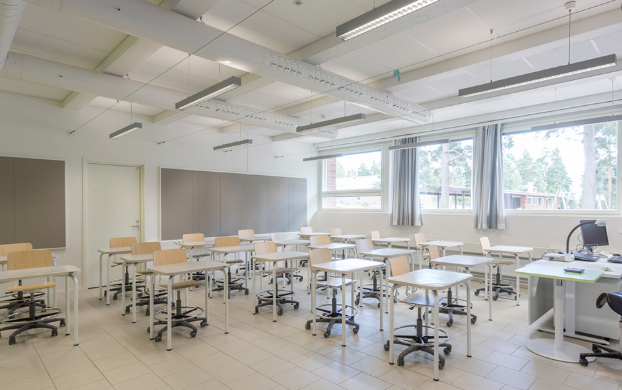The newly revised Shanghai Local Standard DB31 / T 539-2020 “Code for Lighting Design of Primary and Secondary Schools and Kindergarten Classrooms” was approved by the Shanghai Municipal Market Supervision and Administration Bureau and will be released on February 28, 2020, and will be on May 1, 2020 Implementation, when the new version of the standard DB31 / T 539-2020 replaces the old version of the standard DB31 / T 539-2011.

This standard is under the jurisdiction of the Shanghai Education Commission Education Technology Equipment Center. The drafting units include Shanghai Education Commission Education Technology Equipment Center, Fudan University Electric Light Source Institute, National Lamp Quality Supervision, and Inspection Center, National Electric Light Source Quality Supervision and Inspection Center (Shanghai).
The main differences between the new version and the old version are as follows:
1. Added the relevant requirements for LED classroom lighting fixtures. There is no requirement for LED lamps in DB31 / T 539-2011. In recent years, LED lamps have developed rapidly and have been widely used in many occasions, but in the education industry, they cannot be promoted because of backward standards. In this revision, the requirements of LED classroom lighting products are clearly defined. According to the characteristics of this product, strict restrictions are placed on blue light hazards, stroboscopic and flashing, lamp reliability, color rendering, and lighting power density. It will not harm students during use.
2. In order to improve the comfort of classroom lighting, a series of new requirements have been added on the basis of the original standard limits. For example, according to the latest lighting standards at home and abroad, color temperature and other indicators are added. For some places, vertical illuminance is increased, and two levels of basic and recommended lighting indicators are given; the technical requirements of LED classroom lighting products are increased, and light is proposed. Specific indicators of biological hazards; recommended indicators with certain leading values such as intelligent control have been added.
3. In view of the characteristics of children’s eyes, a special section for kindergarten lighting was added to clarify the lighting requirements for all kinds of activity rooms in kindergartens.
4. Based on the national standard GB / T 5700-2008, the test method of classroom lighting is clarified. The method specified in GB / T 5700-2008 is relatively loose and does not match the high limit requirements in the standard. Different testing institutions use different methods in the testing process, resulting in different test results in the same classroom. In order to avoid the above situation, in this revision, the test area, test interval, and test point selection of the classroom have made clear regulations.
5. In order to ensure that the classroom lighting continues to meet the requirements of the standard, the daily maintenance, maintenance, regular testing and service life of classroom lighting products have been specially formulated accordingly. It is required that classroom lighting of newly built, rebuilt and expanded classrooms should be inspected by qualified third-party testing institutions at provincial level and above before the official opening. The testing items should include at least the desk illumination and uniformity, the writing board surface illumination and Uniformity, glare (UGR), lighting power density, color temperature and color rendering index, etc .; also provides for regular maintenance and update of damaged and defective light sources and lamps. When the light source or lamp cannot meet the requirements due to light attenuation, the light source or lamp should be replaced in time; the surface of the lighting device should be cleaned every semester. Every semester the school should conduct re-testing of classroom lighting and so on.
The promulgation of this standard will lead Shanghai primary and secondary schools and kindergartens to further establish a healthy, comfortable and advanced classroom light environment, and provide support for the effective control of students’ poor eyesight rate.










